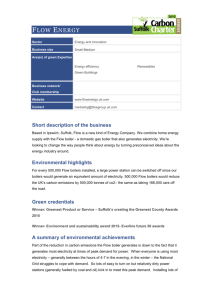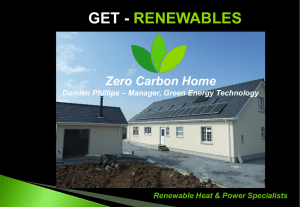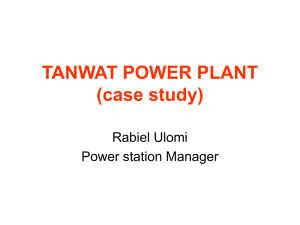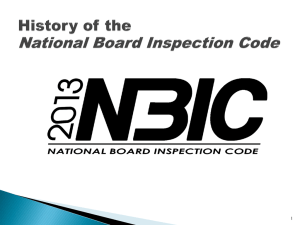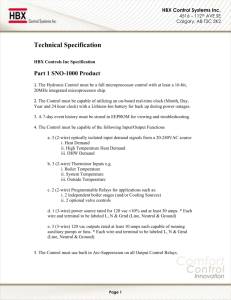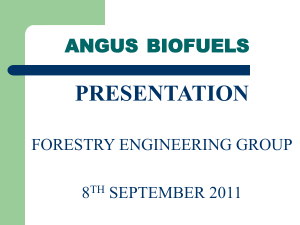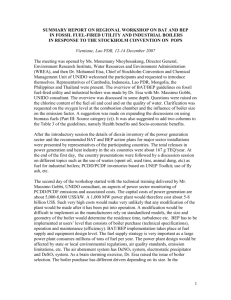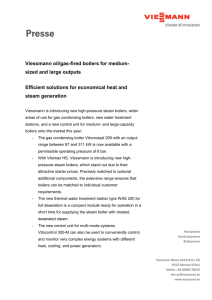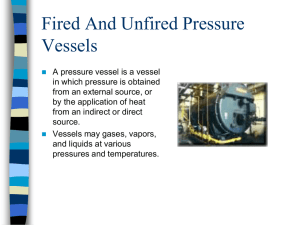State of Connecticut - training powerpoint
advertisement
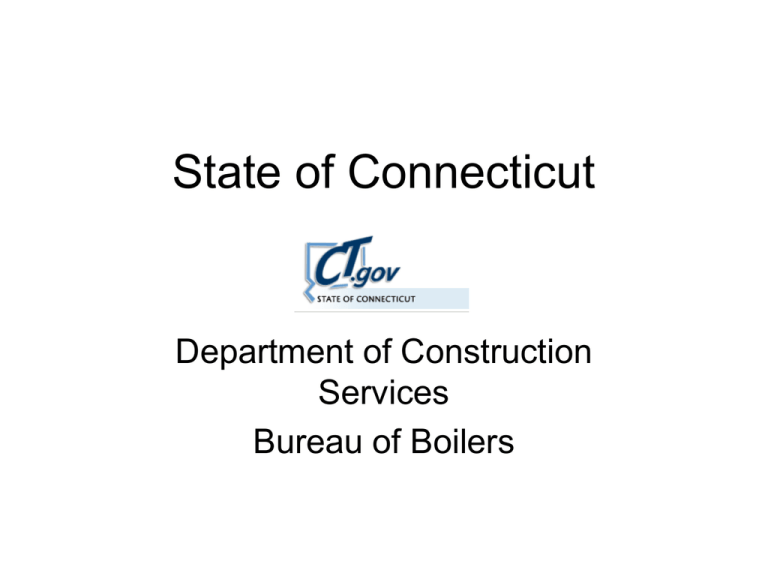
State of Connecticut Department of Construction Services Bureau of Boilers History • 1864 – “An Act Authorizing The Governor To Appoint Inspectors Of Boilers • 1875 – part of weights, measures and inspectional laws • 1902 – removal of incompetent operators • Revisions in 1915, 1918, 1920 and 1930 • 1949 – added spark arrestors on portable steam boilers • 1958 – Revisions Department of Public Safety • 1986 – Added ASME certification – last major revision • 2003 – new exceptions mainly new definitions of public buildings and public service company • 2011 – Department of Construction Services Present Day Department of Construction Services – Office of State Building Inspector All Steam and Hot Water Boilers not excluded Hot Water Heaters exceeding 200,000 Btu’s per hour Water Heaters < 200,000 Btu’s per hour located in schools, day care centers, public or private hospitals, nursing or boarding homes, churches or public buildings as defined in section 1-1 Antique or model boilers used in public, nonprofit engineering or scientific museums and operated for educational, historical or exhibition purposes having a shell diameter greater than 12” and a grate surface area greater than 1 sq ft. Inspectors ⌂ Department of Construction Services ⌂ Special ⌂ Insurance company boiler inspectors ⌂ Shall inspect all boilers insured by their companies ⌂ Must file reports within 15 days for internals, 30 days for externals Definitions • Boiler means a closed vessel intended: – – (1) (2) For use in heating water or other liquids; For generating steam or other vapors under pressure or vacuum by the direct application of heat from combustible fuels, electricity, or nuclear energy. • Hot Water Heating – a boiler used for heating purposes operating at pressure not exceeding 160 psi at 250 degrees • Hot water supply – a boiler furnishing hot water to be used externally to the system at pressures not exceeding 160 psi and / or temperatures not exceeding 250 degrees. • Hot water heater – means a closed vessel in which water is heated by the combustion of fuels, electricity, or any other source and withdrawn for external use to the system at pressures not exceeding 160 psig and shall include the apparatus by which heat is generated and all controls and devices necessary to prevent water temperatures from exceeding 210 degrees • Low pressure heating boiler – means a boiler operated at pressures not exceeding 15 psig or at water pressures not exceeding 160 psig and temperatures not exceeding 250 degrees. • Miniature boiler - means any boiler which does not exceed any of the following limits: 16 inches inside diameter of shell; 5 cubic feet gross volume exclusive of casing and insulation, 20 square feet of water heating surface, 100 psig allowable working pressure • Power boiler - means a closed vessel in which steam or other vapor (to be used externally to itself) is generated at a pressure of more than 15 psig by the direct application of heat. • High pressure, high temperature hot water boiler – means a boiler operating at pressures exceeding 160 psig and/or temperatures exceeding 250 degrees. Inspections ◊ High Pressure objects - > 15 psi steam, 160 psi water – 1 year certificate. Symbolized by the S or M stamps ◊ Low Pressure objects - <=15 psi steam, <= 160 psi water – 2 year certificate. Usually an H, HLW or U stamp Major Codes • American Society of Mechanical Engineers – Sections I, II, III, IV, V, VI, VII, VIII (electric water heaters), IX, and CSD-1 (1998 edition) • The National Board of Boiler and Pressure Vessel Inspectors – Inspection Code (1998 edition) Most Common Violations Temperature Controls Pressure Relief Valve Installations Undefined Controls Expansion Tanks Low Water Cut Offs Pressure Controls Leaks – Waterside or Fireside Pressure Relief Valve Operation Undefined Boiler Violations Pressure gage installation

